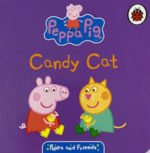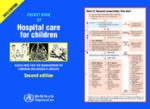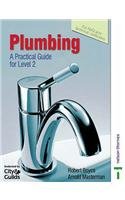-
Peppa pig: Sharing
KShs 495.00Grab yourself a copy of Sharing from Peppa Pig. This small board book comes full of Peppa Pig characters your child will recognise and an easy to read font that you can use to read along with your child as they enjoy a story with Peppa Pig.
Peppa likes sharing. Sharing makes everything more fun!
-
-
-
Peppa Pig Candy Cat
KShs 495.00A stunning little book for you and your little one to read along together.
-
Dictionary of Optometry and Vision Science
KShs 13,300.00Completely revised, updated, and redesigned, this classic dictionary of optometry and vision science by Dr. Michel Millodot continues to be an essential resource for all optometrists in training and in practice, as well as residents in ophthalmology. It is also a crucial source of information for anyone involved in vision science and in the optical industry. It now includes many new entries on pathology, pharmacology, investigative techniques, visual perception, optics and contact lenses. This edition presents all of the features that have made it so successful in the past, such as succinct, understandable definitions, comprehensive tables and illustrations, clinical advice, and extensive cross-references.
Uniquely blending the best features of a textbook, a dictionary, and a practical handbook, Dictionary of Optometry and Vision Science remains a cornerstone for all those providing eye care, engaged in vision science, or entering the optical industry.
- Now includes definitions of over 5600 terms, as well as 90 tables and 253 illustrations that enhance understanding of many of the definitions.
- Expert Consult™ eBook version included with purchase. This enhanced eBook experience allows you to search all of the text, figures, and references from the book on a variety of devices.
-
Roadside Crosses
KShs 400.00The Monterey Peninsula is rocked when a killer begins to leave roadside crosses beside local highwaysânot in memoriam, but as announcements of his intention to kill. And to kill in particularly horrific and efficient ways: using the personal details about the victims that theyâve carelessly posted in blogs and on social networking websites.
The case lands on the desk of Kathryn Dance, the California Bureau of Investigations foremost body language expert. She and Deputy Michael OâNeil follow the leads to Travis Brigham, a troubled teenager whose role in a fatal car accident has inspired vicious attacks against him on a popular blog, The Chilton Report. As the investigation progresses, Travis vanishes. Using techniques he learned as a brilliant participant in multiplayer online role-playing games, he easily eludes his pursuers and continues to track his victims. Among the obstacles Kathryn must hurdle are politicians from Sacramento, paranoid parents, and the blogger himself, James Chilton, whose belief in the importance of blogging and the new media threatens to derail the case and potentially Danceâs career. It is this threat that causes Dance to take desperate and risky measures…
KShs 650.00 -
Attributing Development Impact: The qualitative impact protocol case book
KShs 6,440.00Explore real-world applications of the Qualitative Impact Protocol (QuIP) in Attributing Development Impact: The Case Book. Learn how this innovative approach uncovers causal links, amplifies voices of beneficiaries, and strengthens evaluation in international development.”
Substantiating cause and effect is one of the great conundrums for those aiming to have a social impact, be they an NGO, social impact investment fund, or multinational corporation. All face the same quandary: how do you know whether, or how, you contributed to an observed social change? A wide range of impact evaluation methodologies exist to address this need, ranging from informal feedback loops to highly elaborate surveys. But generating useful and credible information in a timely and cost-effective way remains an elusive goal, particularly for organizations working in complex, rapidly evolving and diverse contexts. Attributing Development Impact brings together responses to this challenge using an innovative impact evaluation approach called the Qualitative Impact Protocol (QuIP). This is a transparent, flexible and relatively simple set of guidelines for collecting, analysing and sharing feedback from intended beneficiaries about significant drivers of change in their lives. Innovative features include the use of ‘blindfolded’ interviewing to mitigate pro-project bias, and the application of a flexible coding system to make analysis and reporting faster and more transparent. The QuIP has now been used in seven countries (Ethiopia, India, Malawi, Mexico, Tanzania, Uganda and UK) with activities to promote food security, rural livelihoods, factory working conditions, medical training, community empowerment and microcredit for house improvement. This book includes comprehensive ‘how to’ QuIP guidelines and practical insights based on case studies from these countries into how to address the numerous methodological challenges thrown up by impact evaluation. Essential reading for evaluation specialists within NGOs, governments and donor agencies; social impact investors; community development practitioners; and researchers and students interested in evaluation methodologies.
-
Pocket book of hospital care for children
KShs 3,640.00This is the second edition of the Pocket book of hospital care for children. It is for use by doctors, nurses and other health workers who are responsible for the care of young children at the first level referral hospitals. The Pocket Book is one of a series of documents and tools that support the Integrated Management of Childhood Illness (IMCI). It is an update of the 2005 edition, and presents up-to-date evidence based clinical guidelines from several recently updated and published WHO guidelines and recommendations. The guidelines are for use in both inpatient and outpatient care in hospitals with basic laboratory facilities and essential medicines. These guidelines focus on the management of the major causes of childhood mortality in most developing countries, such as newborn problems, pneumonia, diarrhoea, malaria, meningitis, septicaemia, measles and related conditions, severe acute malnutrition and paediatric HIV/AIDS. It also covers common procedures, patient monitoring and supportive care on the wards and some common surgical conditions that can be managed in small hospitals.
Details of the evidence on which the Pocket Book is based can be found on the WHO website from the relevant published guidelines provided in the bibliography. This bedside paediatric care guidelines are applicable in most areas of the world and may be adapted to suit country specific circumstances. However, advanced and high care treatment options, such as intensive care or mechanical ventilation, are not described. The Pocket Book is also available in hard copies although the online version will be updated regularly as new evidence emerges.
-
Plumbing: A Practical Guide for Level 2
Plumbing: A Practical Guide for Level 2 is an essential handbook for learners, apprentices, and trainees working towards their Level 2 plumbing qualification. Written in clear, accessible language, it covers all the key skills, knowledge, and safety practices required in modern plumbing.
This practical guide takes you step by step through fundamental topics such as pipework systems, hot and cold water supply, sanitation, central heating, and maintenance. With diagrams, worked examples, and real-world case studies, it helps build confidence in both theory and hands-on application.
Whether you’re starting your career in plumbing, refreshing your knowledge, or preparing for assessment, this book provides:
Comprehensive coverage of the Level 2 plumbing curriculum
Practical guidance on tools, techniques, and safe working practices
Clear explanations supported by illustrations and activities
Essential tips for workplace readiness and professional standards
Ideal for students, apprentices, and training centres, this is the go-to resource for mastering the skills and understanding needed to progress in the plumbing trade.
-
Forensic Pathology Principles and Practice
KShs 60,000.00Forensic Pathology is a comprehensive reference that uses a case-oriented format to address, explain and guide the reader through the varied topics encountered by forensic pathologists. Developed in response to a severe void in the literature, the book addresses topics ranging from medicolegal investigation of death to death scene investigation, forensic autopsy, and artifacts of resuscitation as well as complications of medical therapy, forensic osteology, forensic odontology, forensic photography, and death certification. The book includes various types of cases, including sudden natural death, asphyxia, motor vehicle collisions, death in custody, child abuse and elder abuse, acute psychiatric and emotional deaths, and pregnancy. It contains sample descriptions of pathological lesions which serve to aid pathologists in reporting their findings to law enforcement agencies, attorneys, and others involved in investigations of sudden death. The concepts outlined in the text are beautifully illustrated by large, colorful photographs. There are also “Do and Don’t” sections at the end of each chapter that provide guidance for handling the types of cases examined. This work will benefit not only experienced forensic pathologists, but also hospital pathologists who occasionally performs medicolegal autopsies; doctors in training; medical examiners; law enforcement personnel; crime scene investigators; attorneys; and fellows and students of the medical sciences.










